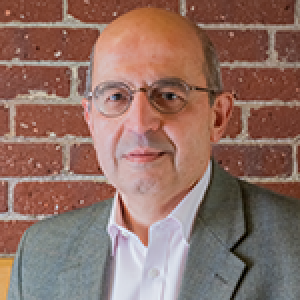Farhad Vazehgoo, senior manager at the Massachusetts Technology Collaborative (MassTech), the state agency supporting growth in the technology sector, toured Saint-Gobain Research North America in Northborough on Monday with Lt. Gov. Karyn Polito. The Commonwealth has committed more than $93 million over five years to support advanced manufacturing projects, including a project between Saint-Gobain and UMass Lowell that’s being used to develop an optical fabric that can be woven into roads, bridges, buildings, pipelines, tunnels, and rail lines to monitor wear. The project was supported by a $600,000 grant from the Massachusetts Manufacturing Innovation Initiative, or M2I2 program, managed by MassTech. The WBJ spoke with Vazehgoo, who before working for the state was an executive at Norwood semiconductor company Analog Devices, about this project and how innovative products like this are manufactured.

It was mind boggling to see how what looks like a piece of fabric is used to detect structural problems on a bridge. Is that the kind of thing being done here?
Engineering takes place in order to find products to develop so it can enhance safety, security, as well as providing ways to reduce manufacturing costs. It’s getting safer products into the market and trying to make them as cheap as possible.
Who comes up with the ideas?
That’s a good question. It starts with inventors, people with ideas, some from universities who are collaborating. It’s an a-ha moment when they discover they can use this technology in this application.
I’m guessing intellectual property protection plays a key role early on.
Yes, it’s important. Anything coming from your head, that no one has ever thought of, becomes intellectual property. Now, we need to safeguard it and make sure the rightful investors are protected, as well as the people who are investing money into it.
Can you give me an example of an idea that became a product and went to market?
Think of the Apple Watch. The need was identified for something that was attached to a person and records everything you do. The idea was there. But there were lots of obstacles and challenges that needed to be solved. For example, how to make it small enough, or rugged enough so that sweat doesn’t destroy it, or light enough for a runner who doesn’t want to carry any more weight. Every aspect of a product has implications. When you combine all of these answers, you solve a problem.
I’m sure it varies, but how much time is there between idea and product hitting the streets?
Typically, in the automotive industry, for example, it can take five years. But it could be six to 18 months to enhance an existing product, adding one feature to it. Think of the changes in iPhones. Some had major advances while others were minor, such as the improved camera or audio.
This interview was conducted and edited for length and clarity by WBJ Staff Writer Thomas Grillo.

